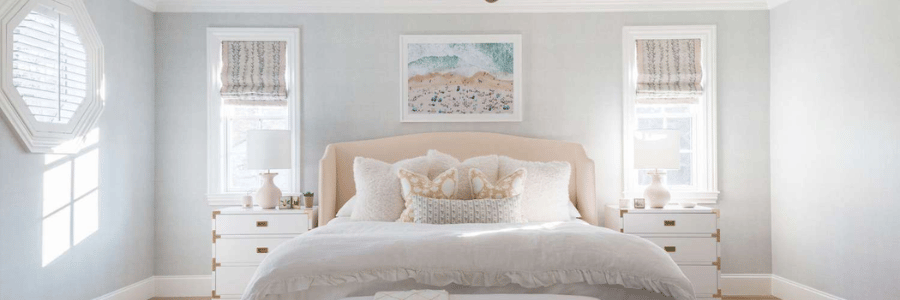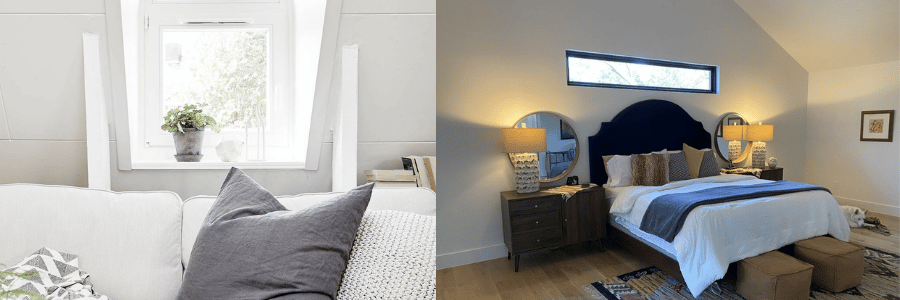Dark rooms with small windows can often feel cramped, cold, and uninspiring. Whether you’re working with a small bedroom, a cozy basement, or a room that’s simply lacking natural light, it’s possible to make the most of your space and brighten it up. By carefully choosing the right strategies, you can make even the smallest of windows let in more light and create a vibrant, airy atmosphere. Here’s how to maximize light in dark rooms with small windows, transforming your space into a brighter and more inviting environment.
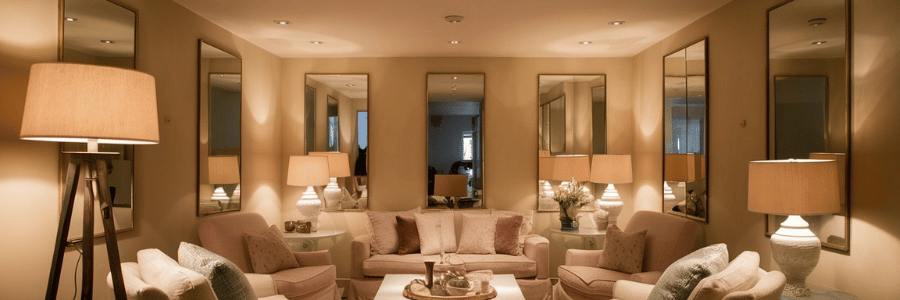
Use Light-Reflecting Paint and Décor
The color palette of a room plays a huge role in how light is reflected or absorbed. To enhance the light coming through small windows, choose light, reflective colors for your walls, ceiling, and furniture.
- Go for Light, Neutral Colors: Soft shades of white, light gray, or cream reflect more light, making the room feel more open and airy. Avoid dark colors like deep blues, greens, or browns, which tend to absorb light and can make a small room feel even darker.
- Reflective Surfaces: Incorporate mirrors, glossy finishes, and metallic décor elements to bounce light around the room. Mirrors placed strategically near windows can reflect daylight and brighten even the darkest corners. You can also consider mirrored furniture or décor accents like picture frames or light fixtures to amplify the effect.
Maximize the Window's Potential
If your room is already equipped with small windows, it’s important to make sure they’re letting in as much light as possible. Here are some ways to enhance their natural light potential:
- Keep Windows Unobstructed: Heavy curtains or thick blinds can block out light, so choose sheer or light-colored window treatments that allow as much daylight as possible to filter through. If privacy is a concern, consider using frosted glass or a sheer fabric to maintain both light flow and seclusion.
- Use Lighter Window Coverings: Instead of heavy drapes, opt for lighter fabrics like linen or cotton that allow light to pass through. Roller shades or Venetian blinds with a light color also help maintain privacy while letting in more light.
- Clean Your Windows Regularly: Dirt and grime on your windows can block light from coming in. Be sure to clean both the inside and outside of your windows regularly, so they’re clear and free from debris that could reduce the amount of natural light entering the room.
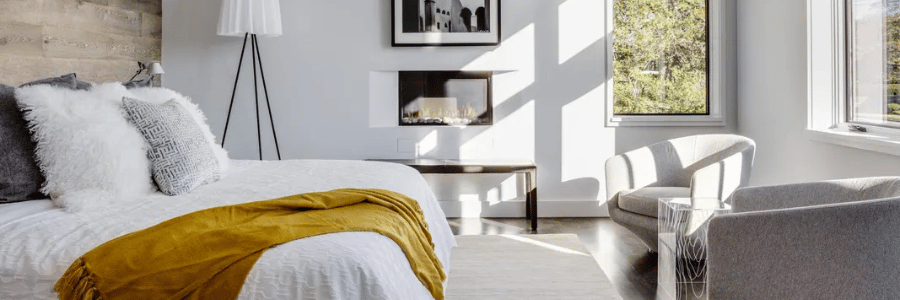
Strategic Lighting for Day and Night
While natural light is ideal, it’s also important to supplement with artificial lighting to brighten up the space when the sun goes down or during overcast days. Layering different types of lighting will ensure your room feels bright all day long.
- Use a Combination of Lighting: In addition to overhead lighting, incorporate task lighting and accent lighting into the room. Table lamps, floor lamps, and wall sconces can add more light and help create a cozy atmosphere while keeping the room well-lit.
- Consider LED Bulbs: LED bulbs are energy-efficient and available in a range of color temperatures, from warm to cool. For a more natural feel, opt for bulbs that mimic daylight or have a color temperature of around 5000K. These bulbs will make the space feel brighter and more inviting.
- Install Dimmer Switches: Installing dimmer switches allows you to adjust the light levels depending on the time of day or your needs. This flexibility is great for ensuring your room feels light and bright when needed, while also offering a cozy ambiance in the evenings.

Optimize Furniture Arrangement
The way you arrange your furniture can have a major impact on how light flows through the room. By positioning pieces strategically, you can prevent the space from feeling too heavy or shadowy.
- Avoid Blocking Windows: Ensure that furniture doesn’t block your small windows. Keep large pieces, such as bookshelves, couches, or cabinets, away from windows so that light can reach every corner of the room.
- Choose Furniture with Open Bases: Consider selecting furniture with open or airy designs, such as chairs with exposed legs or tables with thin frames. This will allow light to flow freely around the room, making it feel less cluttered and more open.
- Use Low-Profile Furniture: Opt for lower-profile furniture in dark rooms with small windows. Tall furniture can obstruct light and make the space feel smaller. Lower pieces, such as sofas or coffee tables, allow light to flow more easily and help create a sense of openness.
Incorporate Reflective Flooring
While walls and ceilings reflect light, flooring is equally important when it comes to brightening a room. Reflective floors can help amplify natural light and brighten the entire space.
- Light-Colored Flooring: If you’re considering updating your flooring, light-colored wood, laminate, or tile can make a big difference. Pale floors reflect light, which helps distribute it evenly throughout the room. Avoid dark hardwood or carpets, as they absorb light and can make the room feel smaller and dimmer.
- Use Rugs Wisely: If you have a dark floor but still want to add color or texture, consider using a light-colored rug or one with reflective patterns to brighten the space. Avoid dark, thick rugs that can absorb light and contribute to a more closed-off atmosphere.

Install Skylights or Light Tubes
If your small windows are still leaving the room feeling too dark, consider adding additional sources of natural light. Skylights and light tubes (also known as sun tunnels) can bring in natural light from above, helping to illuminate areas that aren’t served by side-facing windows.
- Skylights: Installing a skylight can bring in a significant amount of natural light, especially in rooms without windows on the exterior walls. Skylights also give you a view of the sky, creating a more open, airy atmosphere.
- Light Tubes: Light tubes are an excellent alternative for rooms where a skylight might not be possible. These tubes capture light from the roof and funnel it into the room, effectively brightening the space without taking up much room.
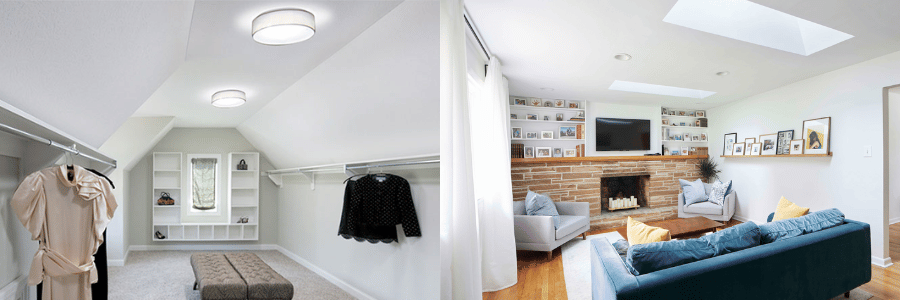
Use Plants to Brighten Up the Room
In addition to lighting and decor, plants can help enhance the overall atmosphere of a dark room. Certain plants thrive in low-light conditions and can help create a fresh, vibrant environment.
- Choose Low-Light Plants: Some plants, like snake plants, pothos, and ferns, can tolerate low light and still thrive in dark spaces. Adding greenery to your room can bring in a touch of nature while also brightening the room’s overall feel.
- Consider Hanging Plants: If floor space is limited, consider hanging plants from the ceiling or placing them on shelves. This will bring more green into the room without taking up valuable floor space, and it can help to visually open up the space.

Conclusion
Maximizing light in dark rooms with small windows can be a challenge, but with the right strategies, you can transform your space into a brighter, more welcoming environment. By focusing on reflective surfaces, optimizing your window space, strategically arranging furniture, and supplementing with artificial lighting, you can create a room that feels larger, lighter, and more inviting. Don’t let small windows limit your design potential—use these tips to brighten your space and enjoy a more vibrant atmosphere.

